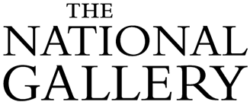Lorem ipsum dolor sit amet, consectetur adipiscing elit, sed do eiusmod tempor incididunt ut labore et dolore magna aliqua. Ut enim ad minim veniam, quis nostrud exercitation ullamco laboris nisi ut aliquip ex ea commodo consequat. Duis aute irure dolor in reprehenderit in voluptate velit esse cillum dolore eu fugiat nulla pariatur. Excepteur sint occaecat cupidatat non proident, sunt in culpa qui officia deserunt mollit anim id est laborum.
Login to the Viosmart community
Don’t have an account?
Join the Viosmart community today
Forgotten your password?
The British Paintings
Thank you for visiting National Gallery

The British Paintings
No code required
If you have made a qualifying purchase, Viosmart will make a donation to the Box For Good Foundation
View Terms
Description
The National Gallery's collection of British paintings contains some of the most famous and best-loved pictures in the country: Hogarth's Marriage A-la-Mode series, Gainsborough's Mr and Mrs Andrews, The Hay Wain and The Cornfield by Constable and Rain, Steam and Speed and The Fighting Temeraire by Turner. Most of these have been on public view for over a hundred years and have become national icons. In 1824 the National Gallery's founding collection of thirty-eight works included nine British paintings. By 1897 there were over 500 British works. In that year the Tate Gallery was established as the National Gallery of British Art, whose role was to build and display a representative British collection, and accordingly the majority of works by British artists held in Trafalgar Square have in the intervening years been transferred to Millbank. The National Gallery still makes acquisitions of exceptional interest, the most recent being the tiny but powerful Wall in Naples by Thomas Jones and the life-size portrait of the horse Whistlejacket by George Stubbs. This catalogue discusses the sixty British pictures in the Gallery in two parts: Constable, Gainsborough, Hogarth, Reynolds, Stubbs and Turner star in Part I, with paintings which are either major works or (like Gainsborough's amiable John Plampin) have remained 'at home' in Trafalgar Square because of their enduring popularity. Part II consists of portraits (including three sculpted busts) of collectors or public servants who helped over the years to create the National Gallery as we know it today. While few of these are great works of art, the National Gallery is proud to retain portraits which reflect the characters and careers of the oddly assorted men who shaped its history. The biographies contain lively accounts of men as different from each other as the absentee clergyman and passionate collector, Reverend William Holwell Carr, and the fiery Layard of Nineveh. This beautifully illustrated catalogue, containing full-page colour reproductions and stunning details, reflects recent scholarship and incorporates much new research. It also includes the results of fresh examination of each work by the National Gallery's Conservation and Scientific Departments. JUDY EGERTON was formerly Assistant Keeper of the British School at the Tate Gallery. Her previous publications include George Stubbs (1984); Wright of Derby (1990); Making and Meaning: Turner: The Fighting Temeraire (1995), and Hogarth's Marriage A-la-Mode (1997; reissued 2011 with free DVD, narrated by Alan Bennett).
Description
The National Gallery's collection of British paintings contains some of the most famous and best-loved pictures in the country: Hogarth's Marriage A-la-Mode series, Gainsborough's Mr and Mrs Andrews, The Hay Wain and The Cornfield by Constable and Rain, Steam and Speed and The Fighting Temeraire by Turner. Most of these have been on public view for over a hundred years and have become national icons. In 1824 the National Gallery's founding collection of thirty-eight works included nine British paintings. By 1897 there were over 500 British works. In that year the Tate Gallery was established as the National Gallery of British Art, w...

















